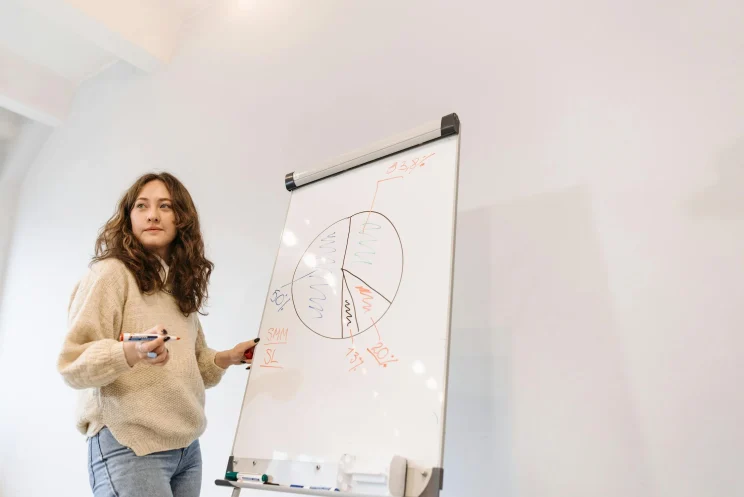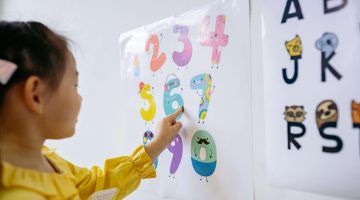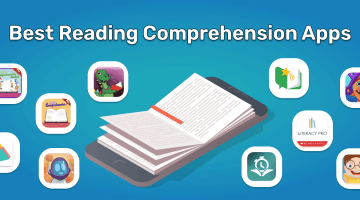How To Teach Percentages? 10 Best Ways
reviewed by Jo-ann Caballes
Updated on August 2, 2025
Understanding percentages is crucial for everyday activities such as calculating discounts and interest, managing money, and understanding statistics. If teaching percentages to your kid feels like a low point, I’m here to share the 10 best easy ways to learn percentages at home and school.
Key points
- A personalized approach, gamified learning, and real-world applications are the best techniques to learn percentages.
- Brighterly, a leading math tutoring platform, blends game-based learning with a structured STEM-focused approach to teaching percentages.
- Children in grades 4-6 can benefit from interactive approaches, visual representations, and group projects when learning percentages.
How to teach percentages?
- Learning percentages with math tutors
- Teaching percentages with worksheets
- Learning with percentage games
- Real-world applications of percentage
- Engaging percentage activities
- Teaching percents with visual representations
- Group projects for teaching percentage
- Hands-on learning with objects
- Speed challenges
- Relate to fractions and decimals
How to teach kids percentages: Exploring 10 techniques in detail
If you don’t know how to teach percentages, I will provide you with 10 techniques you can use simultaneously or choose the best method for your child’s learning style.
Learning percentages with math tutors
So, how to teach a child percentages? The best and easiest way is with the help of a professional math tutor. Engaging one-on-one math lessons will provide your child with the necessary tools to efficiently close knowledge gaps and boost retention.
A leading online math tutoring platform, Brighterly, for example, uses a Common Core-aligned curriculum. Unlike public schools, Brighterly math tutors blend interactive, game-based learning with a structured STEM-focused approach. Brighterly reviews have a 4.7-star rating on Trustpilot, making it one of the best on the market.
How can Brighterly math tutors help your child with learning percentages?
Personalized approach
Brighterly’s math tutoring platform for elementary and middle school students specializes in individual, interactive online math sessions, emphasizing a personalized program for every kid.
Personalized guidance helps children learn more efficiently by adapting the curricula to their individual goals and knowledge gaps. Brighterly math program allows tutors to identify children’s challenges and strengths and provide targeted explanations, making the percentage concept more digestible and engaging.
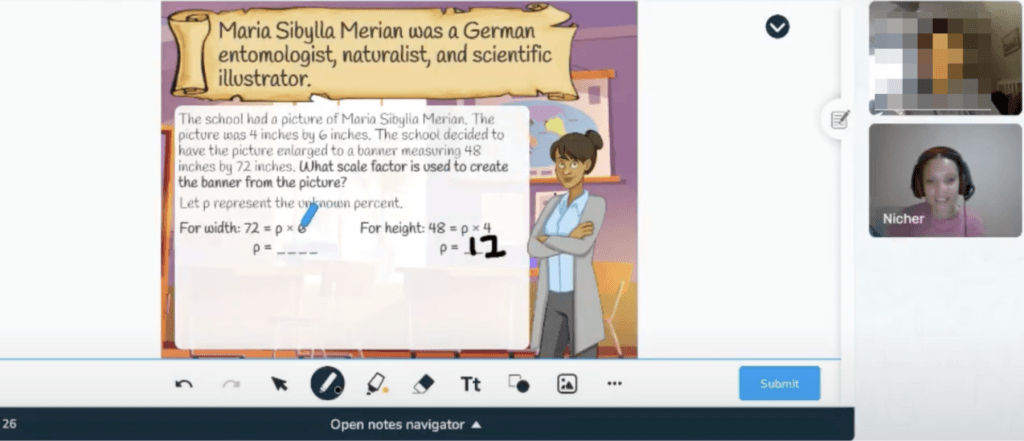
Unlike the public school environment, Brighterly offers a comprehensive approach to learning percentages — by giving children straightforward, interactive tasks, extra practice, and constant support, guaranteeing the best results in the subject.
In addition, as the program is adaptive and customized to each student, you can take a test to assess how well your child understands multiplication and the areas for improvement. With instant feedback like this, their chances of successfully mastering the skill double.
Gamified learning
Brighterly uses fun ways to teach percentages through a gamified approach.
A gamified approach is a great tool to learn percentages and make kids feel more confident and relaxed during math learning. Game-based learning reduces anxiety and boosts math retention, which is exactly what anxiety-prone children need.
Gamified learning experts from Brighterly also help kids enhance their problem-solving skills and obtain a deeper understanding of math concepts through educational and real-life experiences.
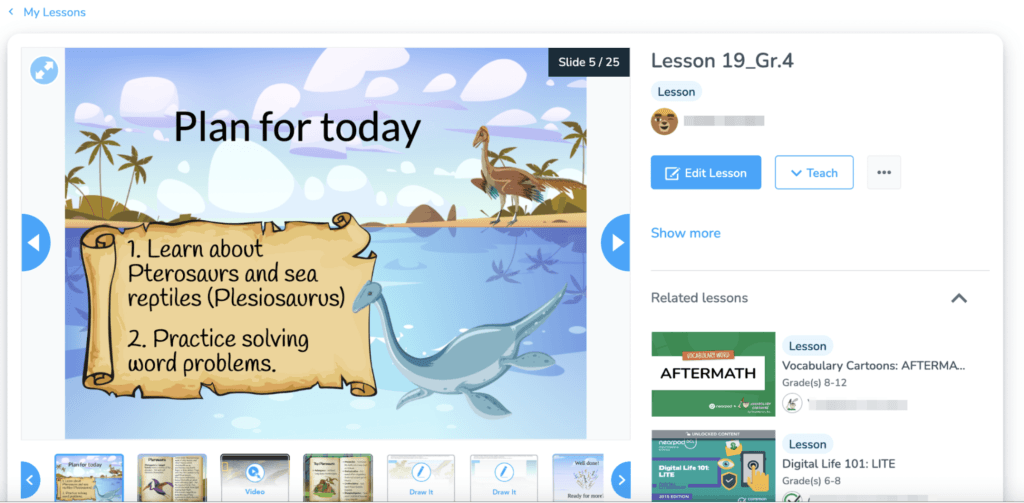
Real-world applications
Since children struggle with abstract concepts, Brighterly tutors use real-world problems involving percentages to boost children’s understanding of percentage concepts. When kids see how they can apply percentages in day-to-day situations, they start to use math rather than in a classroom, making a strong connection to real life.

If you’re wondering how to explain percentages to a child through percentages in the real world, here’s an example of how Brighterly teachers do that:
- Shopping: If a toy has a 20% discount, Brighterly tutors explain how to count the discounted price.
- Pocket money: If a child gets $10 and saves 30%, they have to explore how much it is.
- Food sharing: If a child eats 3 slices of pizza, they have to count how many slices it is.
Teaching percentages with worksheets
If you’re looking to introduce percentages, it’s better to start with a percentage lesson in PDF format. These practice worksheets are perfectly suited for use by teachers or tutors, parents, or for independent study at home. For example, Brighterly provides free printable percentage worksheets:
Even if you don’t subscribe to Brighterly tutoring, Brighterly math worksheets are available for all.
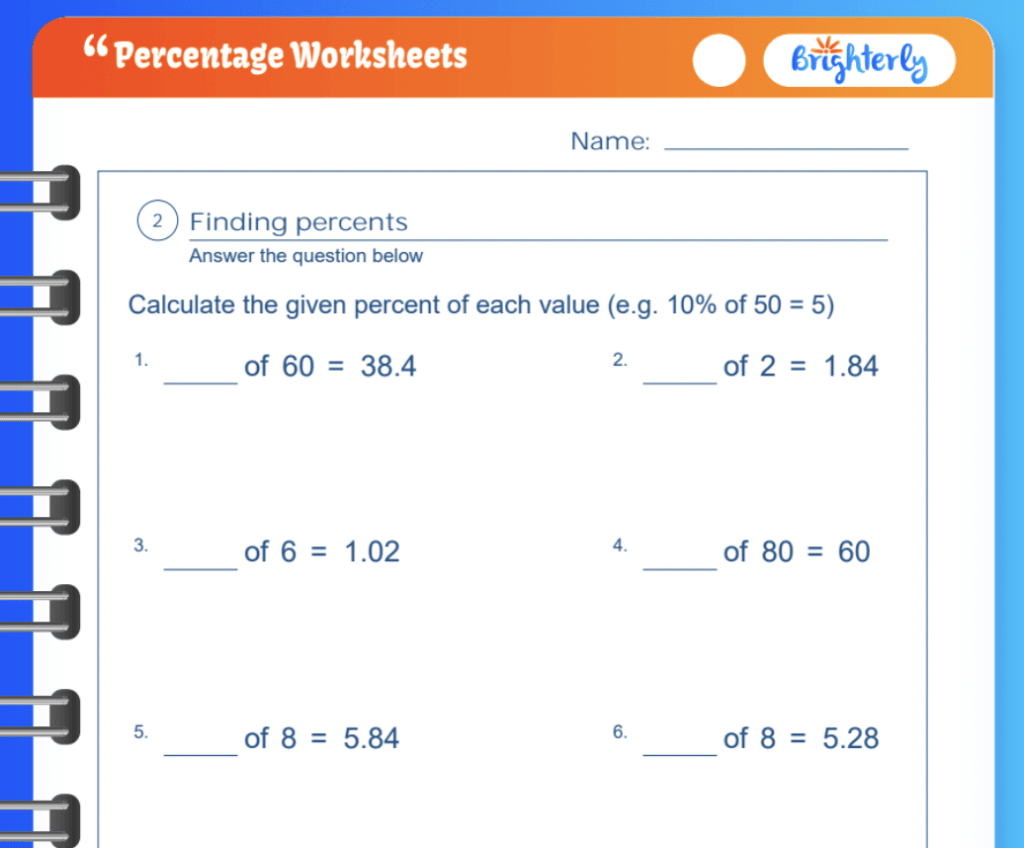
Moreover, Brighterly Knowledge Base provides articles on various math concepts covering any topic your child needs (addition, subtraction, word problems). This resource is ideal for self-learners who prefer exploring topics at their own pace and, of course, for parents who ask the Internet, “How do you explain percentages to a child?”.
Brighterly Knowledge Base offers step-by-step explanations with visuals, including interactive quizzes and challenges along the way. This is a very easy way to teach percentages — no need to spend hours looking for perfect resources or reading countless books.
Brighterly math worksheets: Practical tips
Here’s how to teach percentages through worksheets:
To practice percentages with Brighterly worksheets, go to the Brighterly math worksheets section and choose one of the hundreds of available worksheets.
To save you some time, I’ve listed a couple of percentage worksheets above. You can also check out the whole percentages worksheet section here.
How to teach percentages with worksheets: Benefits
Worksheets are a great way to teach percentages to children, especially if they prefer self-paced learning. This method can help children memorize and recognize patterns and build confidence through repetition.
Yet, it is essential to use age-appropriate, engaging, and interactive worksheets that are not only effective but also provide detailed instruction and explanation at the beginning of the percentage problems.
Learning percentages with percentage games
As I already mentioned, gamified education is a wonderful way to engage children to learn pretty much everything — even percentages. If you don’t know how to explain percentages to a child, start with percentages games, and you’ll see how easy it is for any and all grades and levels.
Finding the right games is easy — there are plenty of quizzes available online. Many online resources and platforms offer gamified percentage learning activities, providing an enjoyable way for learners to explore how to figure out percentages.
Practical tips
Here are some practical tips on how to make learning with percentage games effective:
- Find engaging storytelling and real-life scenarios, like shopping discounts or sports statistics.
- Set challenges and reward systems to further motivate students.
- Incorporate some screen time. Digital percentage games are a valuable resource for mastering the concept and solving problems in a fun way.
Benefits
Gamified learning has numerous benefits, including enhanced retention, enjoyment, and confidence. However, the biggest advantage of learning with percentage games is acquiring practical skills through engaging activities. That will allow kids to apply percentages in real-world scenarios without anxiety.
How to explain percentages to a child with real-world application of percentage
The real-world application of percentages teaches problem-solving skills, which are crucial when it comes to percentages. By applying this knowledge to solve “real” problems, students can see the importance of knowing percentages in their daily lives, making the learning experience more meaningful and relatable.
Problems that require percent calculations include determining discounts and interest rates or analyzing data. For an extra challenge, incorporate real data sets and infographics that show information with percentages. This is where they see percentages in the real world and can interpret the data.
Practical tips
Here are some practical tips on how to make real-world application of percentages effective:
- Use shopping as a learning tool. Ask your kid to analyze discounts and compare prices when you’re out.
- Incorporate budgeting. Do a number of percentage calculations with pocket money.
- Cook with proportions. Adjust ingredients to practice percentage-based scaling.
Benefits
If you want to make learning percentages meaningful and practical, the real-world application of percentages is a great tool. It significantly improves understanding and comprehension of the percentage while doing mundane, everyday tasks.
Other benefits include enhanced financial literacy, better decision-making, and problem-solving skills.
How to teach percentages with engaging percentage activities
As mentioned earlier, to reinforce any math concept, hands-on activities are crucial. The same goes for percentages — you’ve got to incorporate engaging percentage activities into your little one’s everyday life.
In the United States, an average kid uses math in about 40% of their daily activities. However, percentages still cause troubles for the majority of children and even adults. Hence, percentage activities outside of school are essential for mastering the concept before it’s too late.

Practical tips
Here are some practical tips on how to make engaging percentage activities effective:
- Practice with DIY projects. For example, you can create a “savings account” where you put aside a different percentage amount every month.
- Calculate discounts and tips from the total price on a daily basis.
- Play percentage-based games and quizzes.
Benefits
When the question “How to teach percentages easily?” is on your mind, don’t fret. Once you incorporate engaging percentage activities in your kids’ day-to-day life, here’s how they will benefit:
- It will make learning amusing.
- They will build practical skills.
- They will feel more confident in school, as well as calculating percentages outside the classroom.
Teaching percentages with visual representations
Visualization is a great tool for most children. Before moving to abstract calculations, use visual multiplication models — they help kids understand this concept in a tangible way.
Tools such as bar graphs, pie charts, and pictorial representations will help you demonstrate the relationship between percentages and whole quantities. With step-by-step examples like this, students can build a more comprehensive understanding of percentages.
Practical tips
To make teaching percents with visual representations even more fruitful, here are some practical tips:
- Ask students to create their own visual representations using art supplies or online tools.
- Use colored blocks, fraction circles, and interactive digital tools.
- Represent discounts or survey results with charts or graphs to reinforce hands-on skills.
Benefits
If you don’t know how to teach percentages in math, using visual representations must be one of the first things you consider. Most people are visual learners, so teaching percents with visual representations has many benefits:
- Visuals make abstract concepts easier to grasp.
- Seeing percentages and how they work is great for long-term retention.
- Engaging and colorful visuals make learning fun, especially for younger students.
Group projects for teaching percentage
Collaboration is a great tool when it comes to learning new math concepts — it fosters a deeper understanding of them. Moreover, it is more fun and inspiring than self-learning.
You can work together with your kid, or, if you’re a teacher, encourage them to work together on a whole group project that involves percentages. For instance, ask them to plan a budget for an event, allocating percentages to different expenses. A project like this will allow them to practice converting percentages and boost their communication skills.
Practical tips
Here are some practical tips on how to make group projects for teaching percentage properly:
- Event budgeting: As I’ve mentioned, ask children to plan a budget for an event, allocating percentages to different expenses.
- Classroom store: Set up a mock store to calculate discounts, taxes, and profit margins.
- Group polling: Ask children to poll their classmates on their favorite activities, then create percentage-based charts.
Allow the students to choose their events to plan and budget to make group projects even more exciting. Remember, collaborating is an important part of education.
Benefits
Group projects are specifically helpful when you don’t know how to teach percentages of a number. First, it takes the pressure off and lets kids experience percentages through “normal” experiences.
Second, it lets children not only improve their percentage knowledge but also work in teams, enjoy the pastime, and ultimately boost their collaboration, problem-solving, and communication abilities.
Learning percentages with hands-on learning with objects
Manipulatives are an important element of teaching. Although they may not seem like an obvious choice in math, they help students visualize and interact with concepts in a more ponderable way.
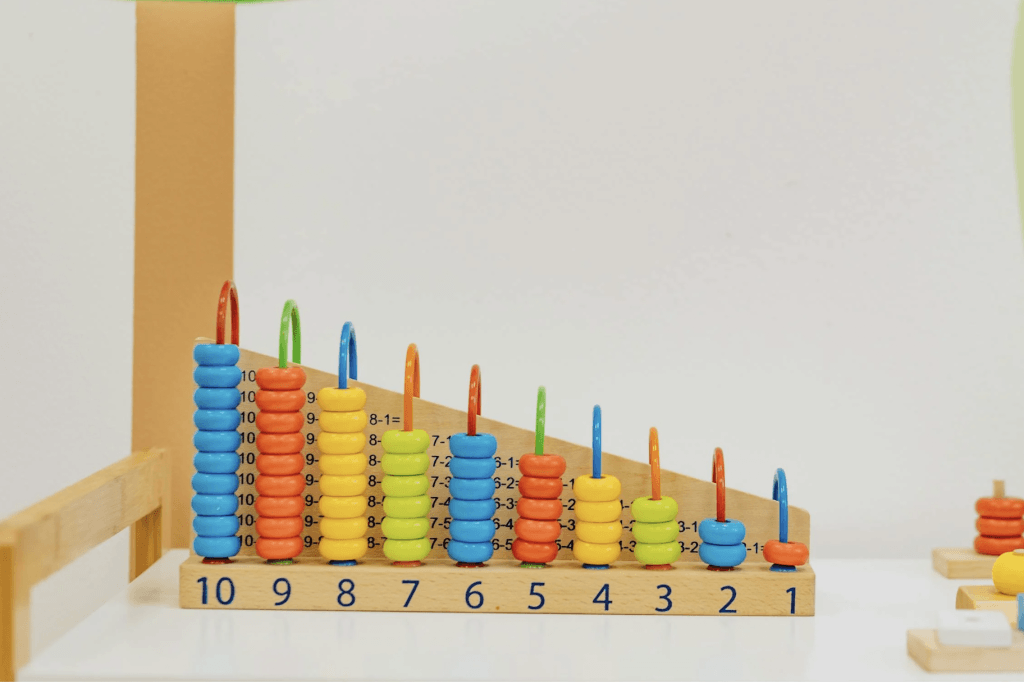
Practical tips
You can use many different physical objects in your lessons to make your teaching effective:
- Lego blocks. You can assign percentages to blocks and build them accordingly.
- Measuring caps. Use them to demonstrate percentage conversions in cooking.
- Color-sorting with objects. This activity will help you train percentage distributions.
Benefits
Hands-on learning with objects is particularly helpful when you teach your children at home. You can incorporate this teaching method when cooking, tidying up the room, or playing.
This way, you can easily teach your kids how to do percentages in your head in a home environment. After all, out of all places, home is the best to learn.
Learning percentages with speed challenges
Speed challenges are another way to make learning percentages entertaining. It also adds a competitive element to learning, which can be beneficial to some kids. Timed activities like this encourage quick thinking, improve mental math skills, and keep students motivated.
If you want to make teaching dynamic and exciting, you should definitely consider adding speed challenges!
Practical tips
Here are a couple of ideas for speed challenges you can use in your teaching:
- Flashcards. Create percentage-related flashcards and start flashcard races.
- Discount games. Collect price tags with discounts and ask students to calculate them.
- Set a timer. The easiest way to challenge your kids is to set a timer and have students solve as many percentage problems as possible.
Benefits
Learning percentages with speed challenges has some direct benefits:
- It encourages quick calculations and improves mental math.
- Speed challenges encourage healthy competition and motivate students to challenge themselves.
- It makes learning fun, engaging, and effective.
Relate to fractions and decimals
Relating fractions and decimals to percentages helps children see the connections between mathematical concepts. Students have to understand how certain numbers would be best represented as a fraction, decimal, or percentage and how to build connections between them.
This method allows greater flexibility in problem-solving and number sense. Not to mention, kids can easily make the connection when they have knowledge gaps in one of the topics.
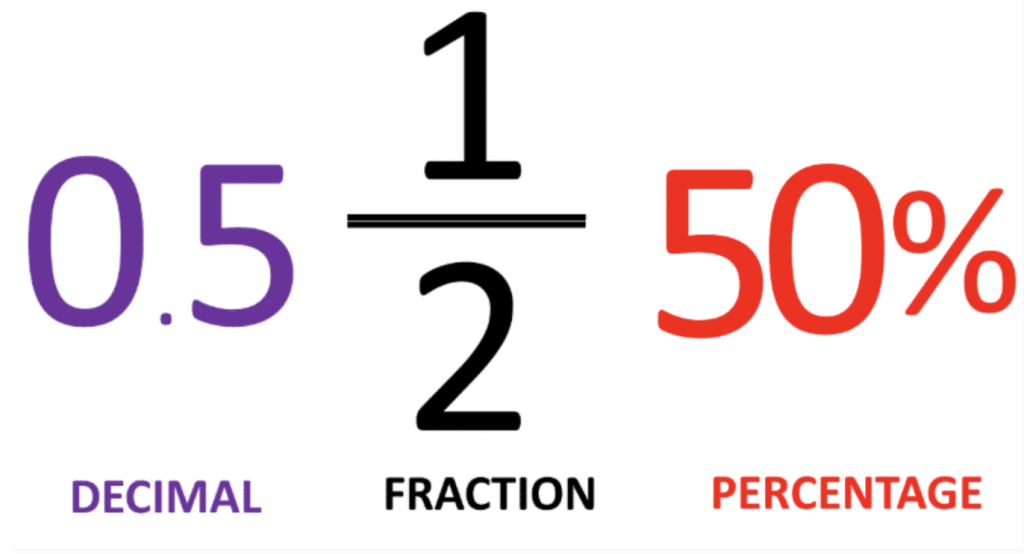
Practical tips
If you’re asking yourself, “How to teach percentages?”, here’s how you can relate percentages to fractions and decimals:
- Begin by showing the three quantities representing the same number (fraction, decimal, percentage).
- Show them the conversion between the decimals and percentages (for example, 50% and 0.5 differ by just a couple of decimal places).
- Explain that a fraction is a simplified version of a percentage and a decimal (the 2nd grade should have taught this skill). To turn a fraction into a percentage, we multiply the top by 100 and then divide by the bottom. In the example we are doing: ½ = 100/2 = 50.
Benefits
- It enhances conceptual understanding.
- Strengthen number sense.
- And improves conversion fluency.
How to teach percentages to 4th graders?
The best methods to teach percentages to 4th graders are real-world applications of percentages and engaging percentage activities. Using visual representations, hands-on objects, and games are also great ways to catch young students’ attention. You can also relate percentages to fractions and decimals, as this knowledge is relatively fresh in the 4th grade.
How to teach percentages to 5th graders?
The best method to teach percentages to 5th graders from the abovementioned ones is to use a combination of visual representations, real-world applications, percentage worksheets, and interactive activities.
If you were wondering, “How to teach percentage to Grade 5?”, it’s a good idea to start incorporating the abovementioned methods.
How to teach percentages to 6th graders?
The best method to teach percentages to 6th graders from the ones mentioned above is through real-world applications and group projects. 5th graders love to get hands-on experiences.
Next step: Choose the best way to teach percentages!
Percentages are a tricky concept to teach, especially if you’re a parent who’s not proficient in math. In that case, getting professional tutors’ help is probably the best thing you can do for your child’s education.
Brighterly math tutoring platform is your perfect ally in tutoring math, offering a comprehensive approach to teaching. By giving children clear, interactive tasks, extra practice, and constant support, Brighterly guarantees the best results in the subject.
Contact Brighterly to Book your 1st trial lesson today!

